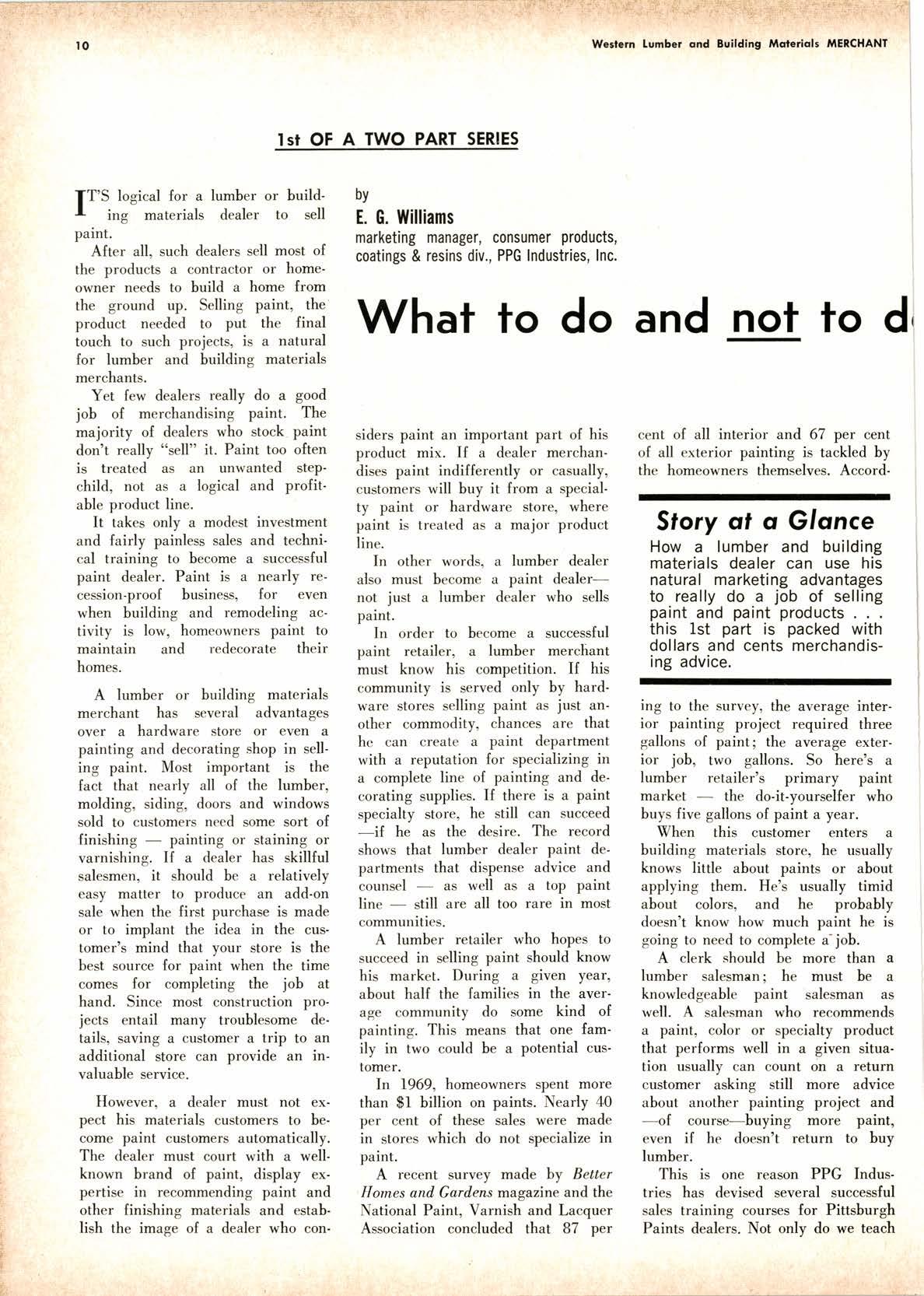
1 minute read
What fo do and not to d
siders paint an important part of his product mix. If a dealer merchandises paint indifferently or casually, customers will buy it from a specialty paint or hardware store, where paint is treated as a major product line.
In other words, a lumber dealer also must become a paint dealernot just a lumber dealer who sells paint.
In order to become a successful paint retailer, a lumber merchant must know his competition. If his community is served only by hardware stores selling paint as just another commodity, chances are that he can create a paint department with a reputation for specializing in a complete line of painting and decorating supplies. If there is a paint specialty store, he still can succeed -if he as the desire. The record shows that lumber dealer paint departments that dispense advice and counselas well as a top paint linestill are all too rare in most communities.
A lumber retailer who hopes to succeed in selling paint should know his market. During a given year, about half the families in the average community do some kind of painting. This means that one family in two could be a potential customer.
In 1969, homeowners spent more than $1 billion on paints. Nearly 40 per cent of these sales were made in stores which do not specialize in paint.
A recent survey made by Better Homes and Gardens magazine and the National Paint, Varnish and Lacquer Association concluded that 87 per cent of all interior and 67 per cent of all exterior painting is tackled by the homeowners themselves. Accord-
Story dI d Glqnce
How a lumber and building materials dealer can use his natural marketing advantages to really do a job of selling paint and paint products this lst part is packed with dollars and cents merchandising advice.
ing to the survey, the average interior painting project required three gallons of paint; the average exterior job, two gallons. So here's a lumber retailer's primary paint marketthe do-it-yourselfer who buys five gallons of paint a year.
When this customer enters a building materials store, he usually knows little about paints or about applying them. He's usually timid about colors, and he probably doesn't know how much paint he is going to need to complete a- job.
A clerk should be more than a lumber salesman; he must be a knowledgeable paint salesman as well. A salesman who recommends a paint, color or specialty product that performs well in a given situation usually can count on a return customer asking still more advice about another painting project and -of course-buying more paint, even if he doesn't return to buy lumber.
This is one reason PPG Industries has devised several successful sales training courses for Pittsburgh Paints dealers. Not only do we teach










